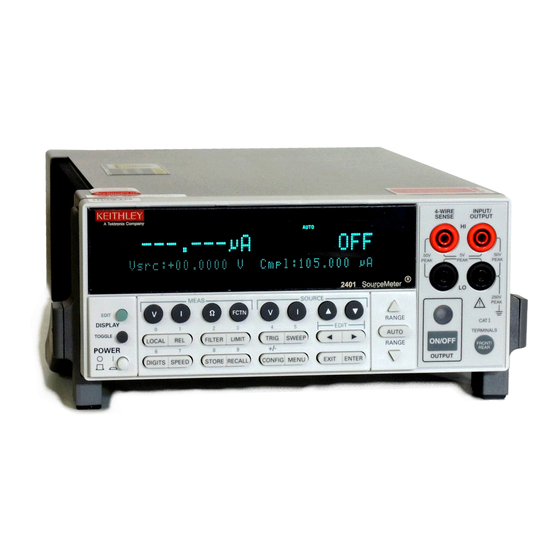
Keithley SourceMeter 2400 Quick Start Manual
Sourcemeter 2400 series source measure unit
Hide thumbs
Also See for SourceMeter 2400:
- Service manual (137 pages) ,
- User manual (594 pages) ,
- Quick results manual (53 pages)
Table of Contents
Advertisement
Series 2400 SourceMeter
Quick Start Guide
2400S-903-01 Rev. E / September 2011
Distribution in the UK & Ireland
Characterisation,
Measurement &
Analysis
Lambda Photometrics Limited
Lambda House Batford Mill
Harpenden Herts AL5 5BZ
United Kingdom
E:
info@lambdaphoto.co.uk
W: www.lambdaphoto.co.uk
T:
+44 (0)1582 764334
F:
+44 (0)1582 712084
A
G
R
E
A
T
E
R
M
E
A
®
S
U
R
E
O
F
C
O
N
F
I
w
w
w
k .
i e
h t
e l
. y
o c
D
E
N
C
E
m
Advertisement
Table of Contents

















Need help?
Do you have a question about the SourceMeter 2400 and is the answer not in the manual?
Questions and answers